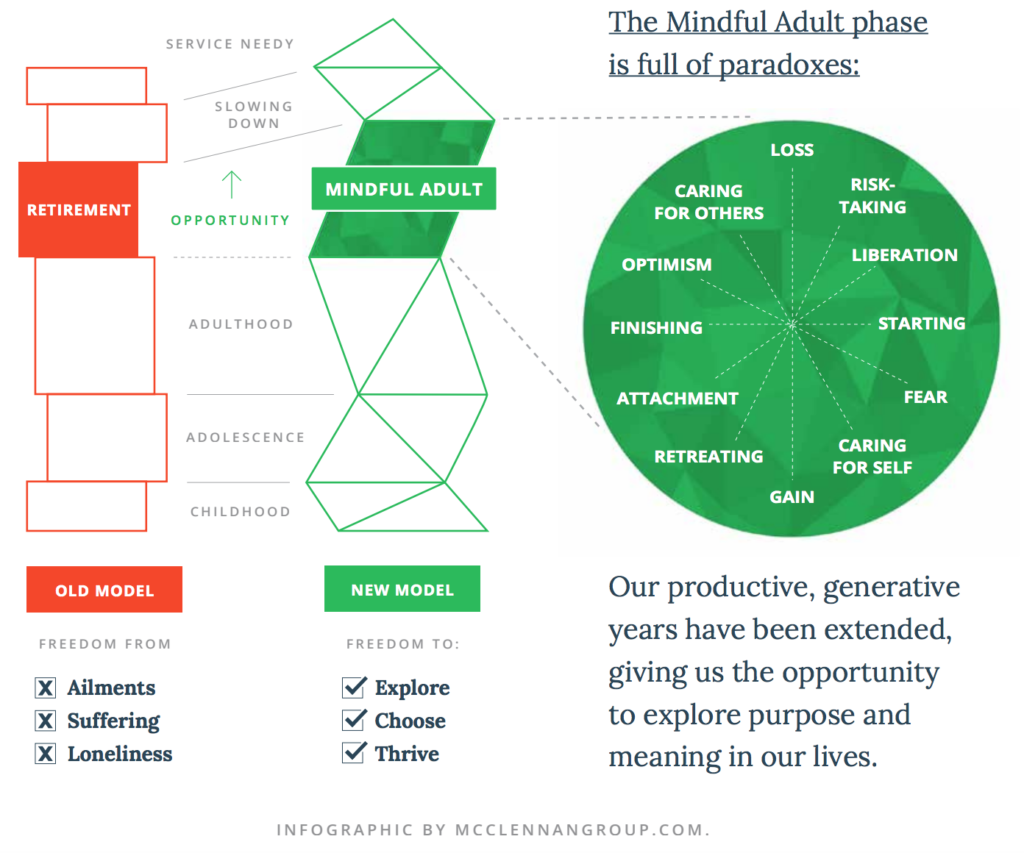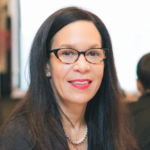As is now common knowledge, by 2035, adults aged 65 or more years will outnumber youth aged 18 or fewer years for the first time in U.S. history. In the meantime, what is becoming apparent is that we have reached new territory, which I refer to as the New Life Curve.
As longevity increases due to advancements in health and technology, our generative years are extended. It’s not “old age” that’s getting a boost, but later adulthood, when we’re still wanting to give something to the world.
That doesn’t mean, however, that older adults are not willing to move into communities, but what they’ll want is much different than what the Silent Generation has opted for. Is your senior living community prepared for the sea change?
Before I go on, let me set this up. The end of the New Life Curve is split into three parts:
- Mindful Adult. What makes these adults mindful? Their experience of loss, which becomes commonplace starting in one’s 50s. Loss puts things in perspective and generates a greater desire for meaning.
- Slowing Down. As people age, they often become less active in the world, perhaps pursuing fewer interests and becoming more of a homebody. Some health issues may be plaguing them by this point.
- Service-Needy. Often the final stage of life, when daily activities of living become a challenge, and people depend on the support of others. They likely are living with multiple chronic conditions.
For the purpose of this column, I’m going to focus on the Mindful Adult, because this is a new phase, not one that we have had a lot of time to ritualize. That makes it exciting and interesting, but it also can be overwhelming because it is unchartered territory. What’s more, there’s a real business opportunity.
So how does this relate to senior housing? First, the senior housing industry should take the age-in-place market seriously. For starters, the majority of today’s retirees want to live in their own homes, and it’s doubtful that will change. Yet for most, aging at home won’t be possible without support, which is something that senior housing knows how to offer.
An age-in-place option would deliver a whole new revenue stream, and there could be a symbiotic relationship between in-home services and physical residences. They don’t have to be at odds.
The second opportunity is to address the coming generations, which will want a different community experience. This includes the look and feel of the physical space, but of equal importance are the underlying insights around what your potential new residents’ needs and wants.
So what are some qualities of the Mindful Adult to be aware of?
- Support their independence, not their dependence.
- Depend on human-centered design so that they don’t have to adapt to your institution but your institution adapts to them.
- Remove the regimen; allow residents to make their own choices about when to eat, etc.
- Health and wellness is a trend that is only expected to grow, and it demands that we re-examine our approach to aging.
- Offer healthy, fresh options for every meal.
- Offer ways for them to contribute to broader societal issues.
The third opportunity is to get creative about engaging residents’ adult children, because these may be your future prospects. How can you improve your relationship with them?
- Build an app to give them real-time information about their parents’ well-being (with their parents’ permission).
- Opening up lines of communication among family members.
- Use this to conduct ongoing research to tap into the minds of potential future customers. Where do the complaints come from? Whatever they don’t like about their parents’ care is a good indicator of what they’re looking for.
- Through the app and any kind of research you’re doing and any communication, you’ll end up with wealth of information to better meet everyone’s needs. Use these data to focus on personalization.
Finally, opening up your residences to the nearby community would support multiple efforts at once: independence, healthy living, greater network, depth of connection. It also could infuse a multigenerational feel.
Some ways of going about that:
- Open up meals to outsiders and charge a fair fee.
- Two-way learning: seniors could offer tutoring to younger folks, and younger folks could help them get familiar with technology.
- Open up activities to the community, such as fitness classes, etc.
This is not to make light of all the business ramifications, including liability. That said, I do believe that obstacles can be overcome and that senior living can make the transition from institutional-like operations to healthy, happy communities.



